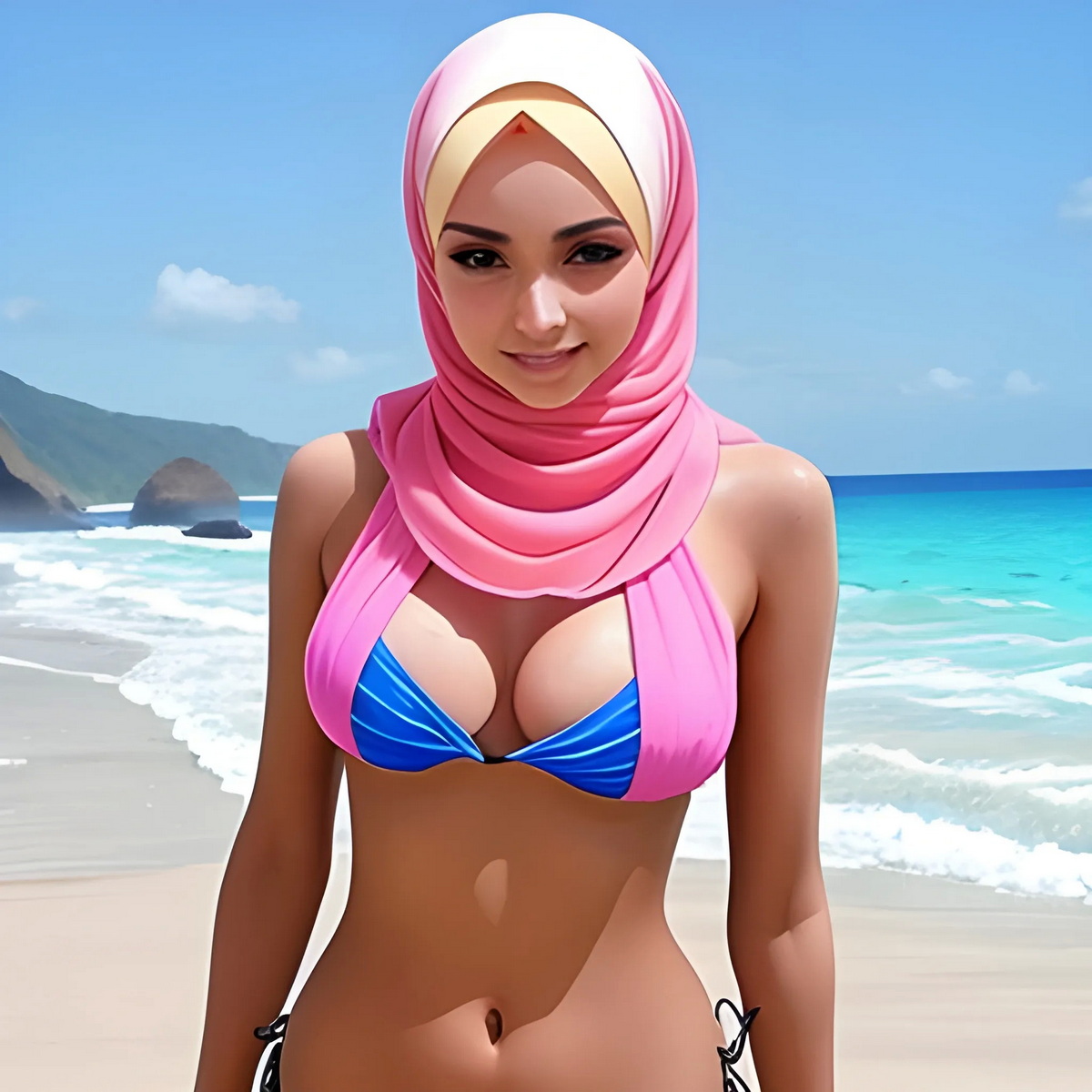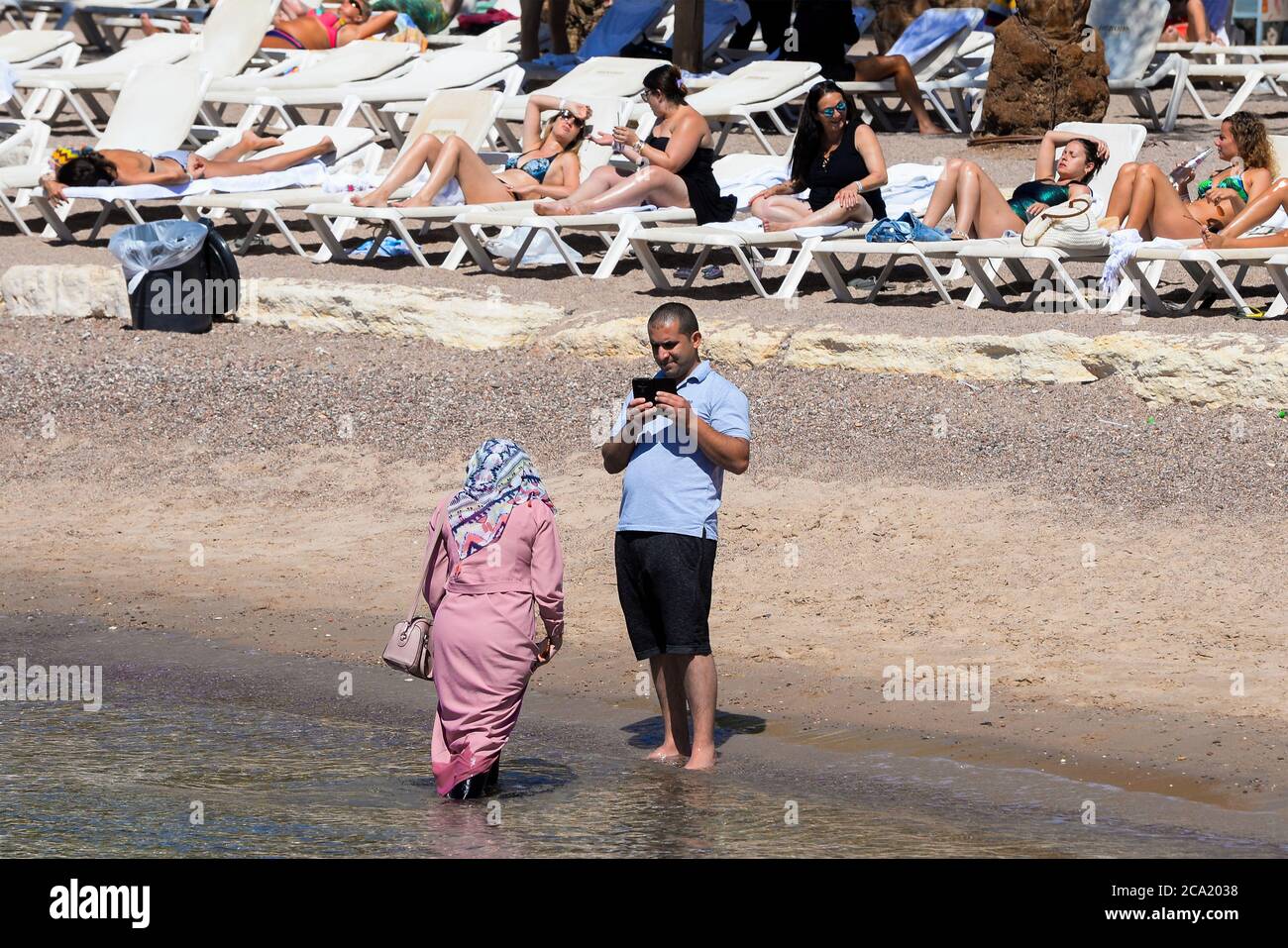Content Menu
● Introduction to the Debate
● Cultural Contexts
>> Hijab: A Symbol of Modesty and Devotion
>> Bikini: A Representation of Modernity
● The Rise of the Burkini
● Hijab vs Bikini in Sports
● Social Media and Public Perception
● Freedom of Choice
● Economic Impact
● Educational and Awareness Initiatives
● Conclusion
● Related Questions and Answers
>> 1. What is the main difference between the hijab and bikini?
>> 2. Why is the burkini controversial?
>> 3. How does the hijab vs bikini debate play out in sports?
>> 4. What role does social media play in the hijab vs bikini debate?
>> 5. Why is freedom of choice important in this debate?
● Citations:
The debate surrounding hijab vs bikini has long been a contentious issue, reflecting broader societal discussions on freedom, modesty, and cultural identity. This article delves into the nuances of these swimwear choices, exploring how they embody different values and experiences across cultures.
Introduction to the Debate
The hijab vs bikini debate is not merely about two pieces of clothing; it represents a clash of cultural norms, religious beliefs, and personal freedoms. The hijab, often associated with modesty and religious devotion, is contrasted with the bikini, seen as a symbol of modernity and body positivity. Both garments have been subject to scrutiny and controversy, with the hijab facing accusations of oppression and the bikini criticized for promoting unrealistic beauty standards.
Cultural Contexts
Hijab: A Symbol of Modesty and Devotion
In many Muslim-majority countries, the hijab is a common sight, symbolizing modesty and religious commitment. It is often worn as a choice, reflecting a woman's connection to her faith and cultural heritage. However, the hijab has also been imposed upon women in some contexts, leading to debates about coercion and personal freedom. For instance, in Iran, the hijab is mandatory, while in countries like Turkey, it is a matter of personal choice.

Bikini: A Representation of Modernity
The bikini, on the other hand, is a staple of Western swimwear, embodying freedom and body confidence. It has evolved over time, with various styles catering to different preferences. Despite its popularity, the bikini is sometimes criticized for objectifying women and promoting unattainable beauty ideals. The rise of body positivity movements has challenged these standards, encouraging a more inclusive definition of beauty.

The Rise of the Burkini
In recent years, the burkini has emerged as a compromise between the hijab and bikini, offering full-body coverage while allowing Muslim women to participate in swimming activities. The burkini has sparked controversy, with some viewing it as a symbol of oppression and others seeing it as a liberating choice. In France, for example, the burkini was briefly banned in some coastal towns, highlighting the tension between cultural expression and public policy.
Hijab vs Bikini in Sports
The hijab vs bikini debate has also played out in the sports arena, particularly in beach volleyball. Athletes like Doaa Elghobashy have worn the hijab while competing, highlighting the importance of cultural expression in sports. Meanwhile, other athletes prefer the bikini, reflecting their personal comfort and style. The inclusion of hijab-wearing athletes in international competitions has helped normalize diverse cultural practices in sports.
Social Media and Public Perception
Social media platforms have amplified the hijab vs bikini debate, with images of women in both garments sparking heated discussions. The Egyptian vs Spanish volleyball match at the Paris Olympics, where Egyptian players wore hijabs and their Spanish opponents wore bikinis, became a focal point for these discussions. Social media has also provided a platform for women to share their personal stories and choices, challenging stereotypes and promoting cross-cultural understanding.
Freedom of Choice
At the heart of the hijab vs bikini debate is the concept of freedom of choice. Many argue that women should be able to choose what they wear without external pressure or coercion. This perspective recognizes both the hijab and bikini as expressions of personal agency, depending on individual motivations and beliefs. However, the reality is often more complex, with societal norms and expectations influencing these choices.
Economic Impact
The hijab vs bikini debate also has economic implications. The market for modest swimwear, including burkinis, has grown significantly, catering to a previously underserved demographic. This shift reflects broader changes in consumer behavior, with companies recognizing the value of inclusivity and diversity in their product lines. On the other hand, traditional bikini manufacturers continue to thrive, with many brands adapting to include more diverse and inclusive designs.
Educational and Awareness Initiatives
Educational initiatives have played a crucial role in bridging the gap between different cultural perspectives. Schools and community programs are increasingly incorporating discussions about cultural diversity and personal choice, helping to foster a more inclusive environment. These efforts aim to promote understanding and respect for diverse cultural practices, including the wearing of hijabs and bikinis.
Conclusion
The hijab vs bikini debate is complex and multifaceted, reflecting diverse cultural, religious, and social values. As we navigate these discussions, it is crucial to promote understanding and respect for individual choices, recognizing that both garments can be empowering in their own ways. By embracing diversity and challenging stereotypes, we can foster a more inclusive society where women feel free to make their own choices about what they wear.
Related Questions and Answers
1. What is the main difference between the hijab and bikini?
- The hijab is a headscarf often worn for modesty and religious reasons, while the bikini is a two-piece swimsuit associated with modernity and body positivity.
2. Why is the burkini controversial?
- The burkini is controversial because some view it as oppressive, while others see it as a liberating choice for Muslim women who want to swim modestly.
3. How does the hijab vs bikini debate play out in sports?
- In sports, athletes may choose to wear either the hijab or bikini based on personal preference and cultural identity, highlighting the importance of respecting diverse cultural norms.
4. What role does social media play in the hijab vs bikini debate?
- Social media amplifies the debate by sharing images and sparking discussions, often challenging stereotypes and promoting cross-cultural understanding.
5. Why is freedom of choice important in this debate?
- Freedom of choice is crucial because it allows women to decide what they wear without coercion, recognizing both the hijab and bikini as expressions of personal agency.
Citations:
[1] https://enewspaper.latimes.com/infinity/article_share.aspx?guid=3d49af9c-02f8-40c9-816b-12624e74c3c6
[2] https://www.abelyfashion.com/burka-vs-bikini-decoding-freedom-modesty-and-choice-in-swimwear.html
[3] https://www.bbc.com/news/magazine-37009324
[4] https://qz.com/753127/this-olympics-image-shows-badass-woman-athletes-playing-just-as-hard-in-a-hijab-as-in-a-bikini
[5] https://www.dailymotion.com/video/x93hwpk
[6] https://www.reddit.com/r/progressive_islam/comments/1iz0398/the_niqab_vs_bikini_comparison/
[7] https://arabamericannews.com/2010/06/06/Where-the-bikini-meets-the-hijab/
[8] https://www.tyla.com/news/olympic-womens-volleyball-bikini-hijab-photo-viral-158315-20240805
[9] https://pinkpangea.com/2014/06/wardrobe-in-a-muslim-country/
[10] https://www.youtube.com/watch?v=sCqYmz6UrSo
[11] https://crescent.icit-digital.org/articles/hijab-burkini-and-islamophobia
[12] https://www.iamhiphopmagazine.com/hijab-vs-bikini-understanding-cultures-ideologies/
[13] https://www.reddit.com/r/progressive_islam/comments/xyslwe/are_bikinis_in_a_beach_setting_halal/
[14] https://yourstory.com/2016/12/hijab-bikini-what-women-wear
[15] https://www.yahoo.com/news/egyptian-volleyball-player-hits-france-164725799.html
[16] https://wisconsinmuslimjournal.org/https-www-usatoday-com-story-opinion-2021-07-27-tokyo-olympics-german-gymnasts-unitards-why-not-hijabs-5385281001/
[17] https://www.reddit.com/r/Hijabis/comments/1880spr/what_do_you_think_of_posts_like_this_one_asking/
[18] https://www.oneindia.com/sports/paris-olympics-egypt-vs-spain-volleyball-match-triggers-hijab-vs-bikini-debate-3897813.html
[19] https://thedeenshow.com/why-i-shed-bikini-for-hijab-the-new-symbol-of-womens-liberation/
[20] https://newsarenaindia.com/paris-olympics/hijab-vs-bikini-debate-in-spain-egypt-beach-volleyball-match/18658
[21] https://www.reddit.com/r/atheism/comments/zfr2z3/the_meme_that_compares_women_in_bikinis_and_women/
[22] https://www.youtube.com/watch?v=MRXkpTcwuHU
[23] https://www.shutterstock.com/search/hijab-swimsuit
[24] https://www.oneislam.tv/videos/4-tv-hijab-or-bikini-which-is-more-problematic
[25] https://www.tiktok.com/@a.maysamills/video/7387353534334848289
[26] https://www.tiktok.com/@ronja_nylander_early/video/7406010932461079840
[27] https://www.tiktok.com/@salehfamily/video/7147820945330261254?lang=en
[28] https://www.youtube.com/watch?v=eETm2Pk8GWg
[29] https://www.youtube.com/watch?v=XmkgV3cPxTs
[30] https://www.youtube.com/watch?v=yAqB13VTQ80
[31] https://www.youtube.com/watch?v=-Wt-qk2HJZQ
[32] https://www.youtube.com/watch?v=t1x5Zu18f7U
[33] https://www.youtube.com/watch?v=FnvbVkPryF0
[34] https://thesocietypages.org/socimages/2012/02/22/questioning-definitions-of-freedom/
[35] https://www.reddit.com/r/Hijabis/comments/9lcnmj/ive_seen_some_women_wear_the_hijab_while_showing/
[36] https://www.youtube.com/watch?v=74fvy4gIYt8



































